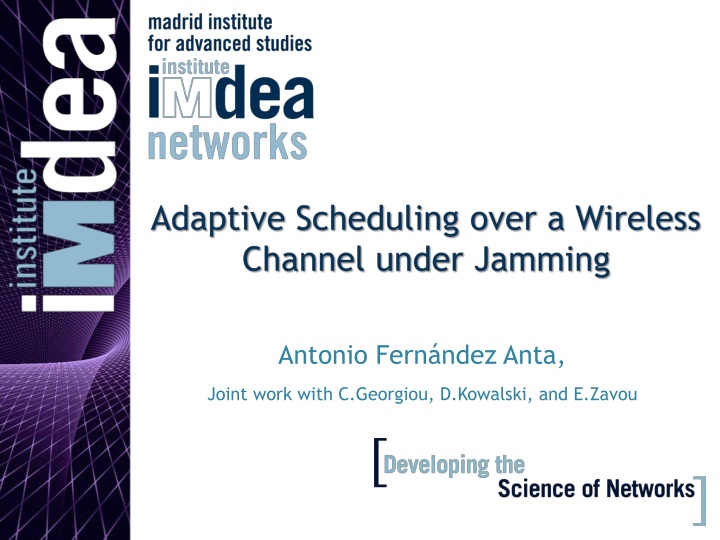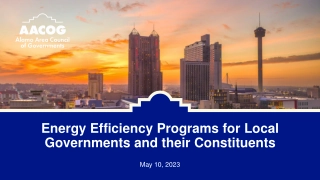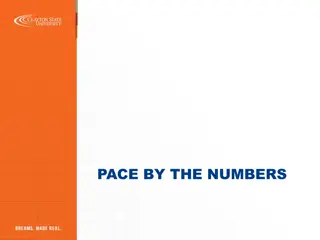
Efficient Wireless Communication Jamming Techniques and Analysis
In this study by Antonio Fernández Anta and colleagues, various jamming techniques in wireless networks, their effects, and competitive analysis are explored. The research delves into intelligent jamming in different networking scenarios and proposes algorithms to enhance goodput in communication channels.
Uploaded on | 0 Views
Download Presentation

Please find below an Image/Link to download the presentation.
The content on the website is provided AS IS for your information and personal use only. It may not be sold, licensed, or shared on other websites without obtaining consent from the author. If you encounter any issues during the download, it is possible that the publisher has removed the file from their server.
You are allowed to download the files provided on this website for personal or commercial use, subject to the condition that they are used lawfully. All files are the property of their respective owners.
The content on the website is provided AS IS for your information and personal use only. It may not be sold, licensed, or shared on other websites without obtaining consent from the author.
E N D
Presentation Transcript
Antonio Fernndez Anta, Joint work with C.Georgiou, D.Kowalski, and E.Zavou
2 Wireless channels Fast communication, maximize throughput Pace U., Feb 21, 2017 Channel jamming Malicious or not
3 [MILCOM 06] D. Thuente, and M. Acharya. Intelligent jamming in wireless networks with applications to 802.11 b and other networks. Survey: several jamming techniques and analysis of their effects on the different networks [TCS 09] S. Gilbert, R. Guerraoui, and C. Newport. Two-node communication of one message / a third node disrupts to delay the communication Constrained, up to messages can be jammed [ICDCS 11] A. Richa, C. Scheideler, S. Schmid, and J. Zhang. Competitive and fair medium access despite reactive jamming. Reactive jamming in MAC layer Constrained jamming: (1- )T time steps (slotted time) n nodes, must deal with collisions Competitive analysis to guarantee a c-fraction of successful time steps Pace U., Feb 21, 2017
4 3 2 1 X X P 1/ 0 Adversary ( , )-A (AQT-like [Andrews el at 2001]) : error token availability rate (recharging) Pace U., Feb 21, 2017 New error tokens : maximum error tokens in adversary s bucket (battery capacity) Fixed amount of data to be transmitted, P Large amount of data to be transmitted Packets of length p = h + l = 1 + l, (header + payload) Continuous time / NOT slotted
5 2 X X P 1/ 0 Efficiency Measures: Total transmission time, Tr Pace U., Feb 21, 2017 Goodput, G Useful Payload / time, UP/Tr NOT competitive analysis Instantaneous feedback
6 Communication restrictions, or sender specifications X X X X 0 r : jammed packets Theorem 1: Using uniform packets of length + ( ( 1 )( 1 )) P P P Pace U., Feb 21, 2017 = P * l + 1 we find the maximum goodput Then, as P grows to infinity, the goodput increases, with its limit becoming
7 Can we achieve a better goodput than the uniform case? Under which circumstances? Case =1: Pace U., Feb 21, 2017 X 0 1/ 2/ 1 1 0 1
8 Algorithm ADP-1: Send packets of decreasing length pi = Z i, for i: 0,1,2 If packet pi is jammed, then send one more packet of length equal to the rest of the interval 0 1/ Pace U., Feb 21, 2017 No jam: pk last packet sent - Total packet lengths = interval length = ) 1 + 1 ( UP k ) 1 + ( 1 k k k = i = ) 1 + = ( p Z k i 2 0 X 0 1/ = ) 1 + Jam: j packets sent 1 ( UP Z
9 Algorithm ADP-1: Send packets of length pi = Z i, for i: 0,1,2 k If packet pi is jammed, then send one more packet of length equal to the rest of the interval Theorem 2: The goodput achieved by Algorithm ADP-1 is Pace U., Feb 21, 2017 which is at least equal to the optimal goodput G* of the uniform case, for hence
10 f X X P 1/ 0 Adversary (T, f)-A T: fixed interval of interest Pace U., Feb 21, 2017 f: maximum error tokens in interval T Efficiency measures Optimal useful payload for T, UP(T, f) Goodput, Useful payload / time, G(T, f)=UP(T, f)/T
11 Divide time into 1/ -intervals 1 new error token, every 1/ time X = 1 1/ 2/ 0 1 0 1 1 Pace U., Feb 21, 2017 X X > 1 1/ 2/ 0 -1
12 Communication restrictions, or sender specifications X X X X 0 T f : jammed packets n : total packets sent Theorem 1: Using uniform packets of length Pace U., Feb 21, 2017 p* T f UPU(p*)(T, f ) T + f 2 Tf achieves useful payload and when no packets are jammed UPU(p*)(T, f, ) T Tf Then, the optimal achievable goodput rate is ( ) 2 GU(p*)(T, f ) 1 f T
13 AlgorithmADP(T, 1): If T [1,2) then Send packet of length p = T else Find i s.t. T [ i(i-1)/2 + 1, i(i+1)/2 + 1 ) Send packet of length p = (T-1)/i + (i-1)/2 If packet is jammed then Send a second packetof length p = T - p else Call ADP(T - p, 1) Pace U., Feb 21, 2017 X 0 T T p1 T p1 p2 T p1 p2 p3 0 1
14 AlgorithmADP(T, 1): If T [1,2) then Send packet of length p = T else Find i s.t. T [ i(i-1)/2 + 1, i(i+1)/2 + 1 ) Send packet of length p = (T-1)/i + (i-1)/2 If packet is jammed then Send a second packetof length p = T - p else Call ADP(T - p, 1) Pace U., Feb 21, 2017 Theorem 2: Algorithm ADP(T, 1) achieves optimal useful payload i T UP ) 1 , ( = + 1 1 1 i + T 2 i i The corresponding goodput is UP(T,1)/T
15 AlgorithmADP(T, f): If T < f + 1then Send packet of length p = T else Send packet of length p = ( T+ )/ If packet is jammed then Call ADP(T - p, f - 1) else Call ADP(T - p, 1) \\ , & depend on T Pace U., Feb 21, 2017 X X ADP(T ,1) 0 T T p1 T p1 p2 T p1 p2 p3 3 2 1
16 Theorem 3: Algorithm ADP(T, f) achieves optimal useful payload UP(T, f ) = k lT ( k l+ k l+ k l k l) k l+ k l k l by choosing the smallest p that satisfies UP(T-p, f-1) = p-1 + UP(T-p, f), Pace U., Feb 21, 2017 where ( ) ( ) T p T p = = ( , ) ( , ) 1 l l k k UP T p f UP T p f l k ( + + ) T + = k l k l k l k l k l p k l k l k l
17 GADP(T,1)=i 1 (i+1) 2 + i i G*= 1 ( ) 2 Pace U., Feb 21, 2017 GADP 1=1 21+ 1+8
18 Uniform Packet Length: NOT the optimal approach Adaptive Packet Length achieved better results Finding an optimal solution for the continuous model, even for = 1 is not trivial Dividing the execution in 1/ intervals is not the optimal approach for the continuous model Pace U., Feb 21, 2017 For 1/ [2,4) the uniform packet scheduling is better than ADP(T,f) for f= =1 Need to adapt the ADP to the number of tokens at the beginning of each interval. Will this lead to optimality?
19 Antonio Fern ndez Anta, Chryssis Georgiou, Elli Zavou: Packet Scheduling over a Wireless Channel: AQT-Based Constrained Jamming. NETYS 2015: 230-245 Antonio Fern ndez Anta, Chryssis Georgiou, Elli Zavou: Adaptive Scheduling Over a Wireless Channel Under Constrained Jamming. COCOA 2015: 261-278 Pace U., Feb 21, 2017
20 Pace U., Feb 21, 2017





















